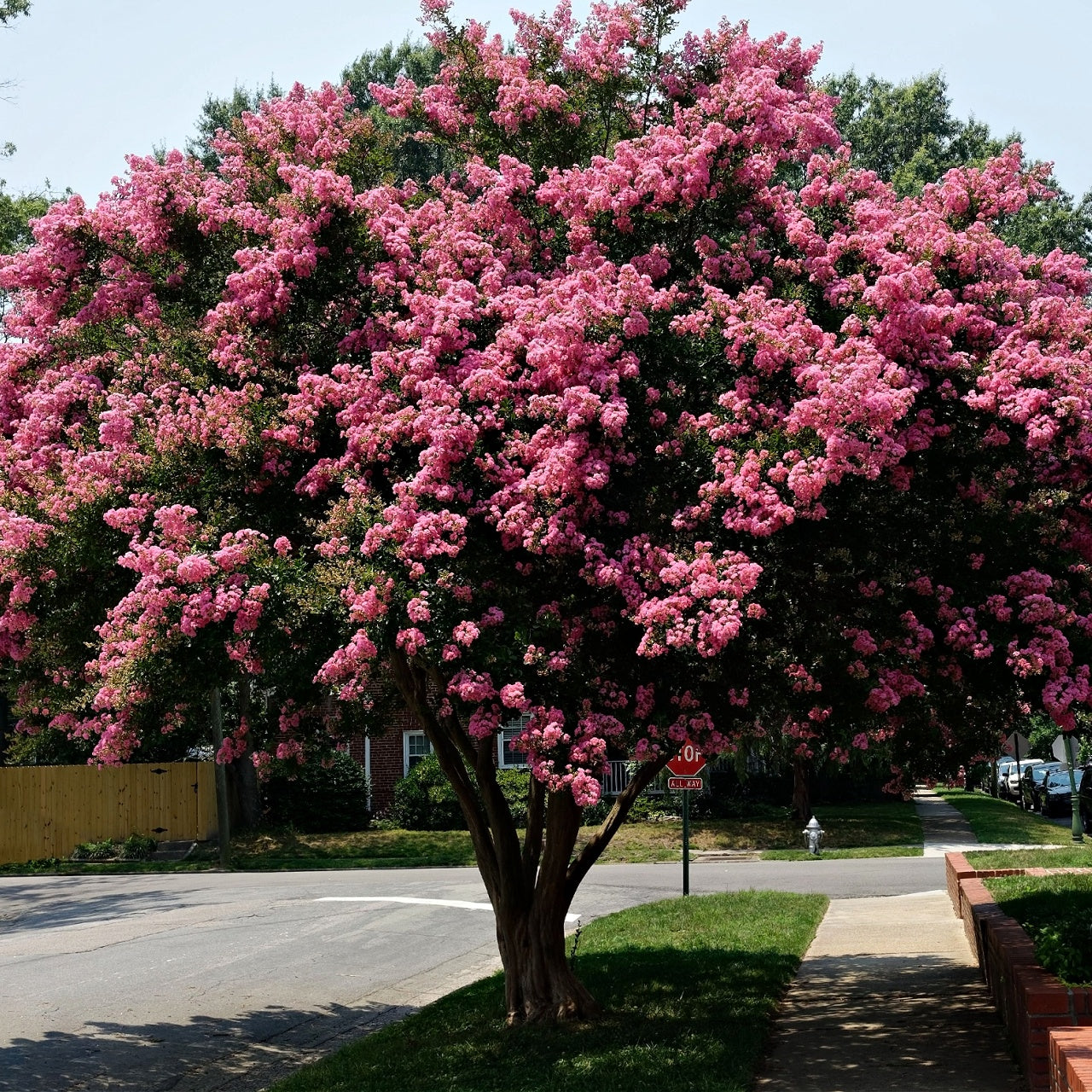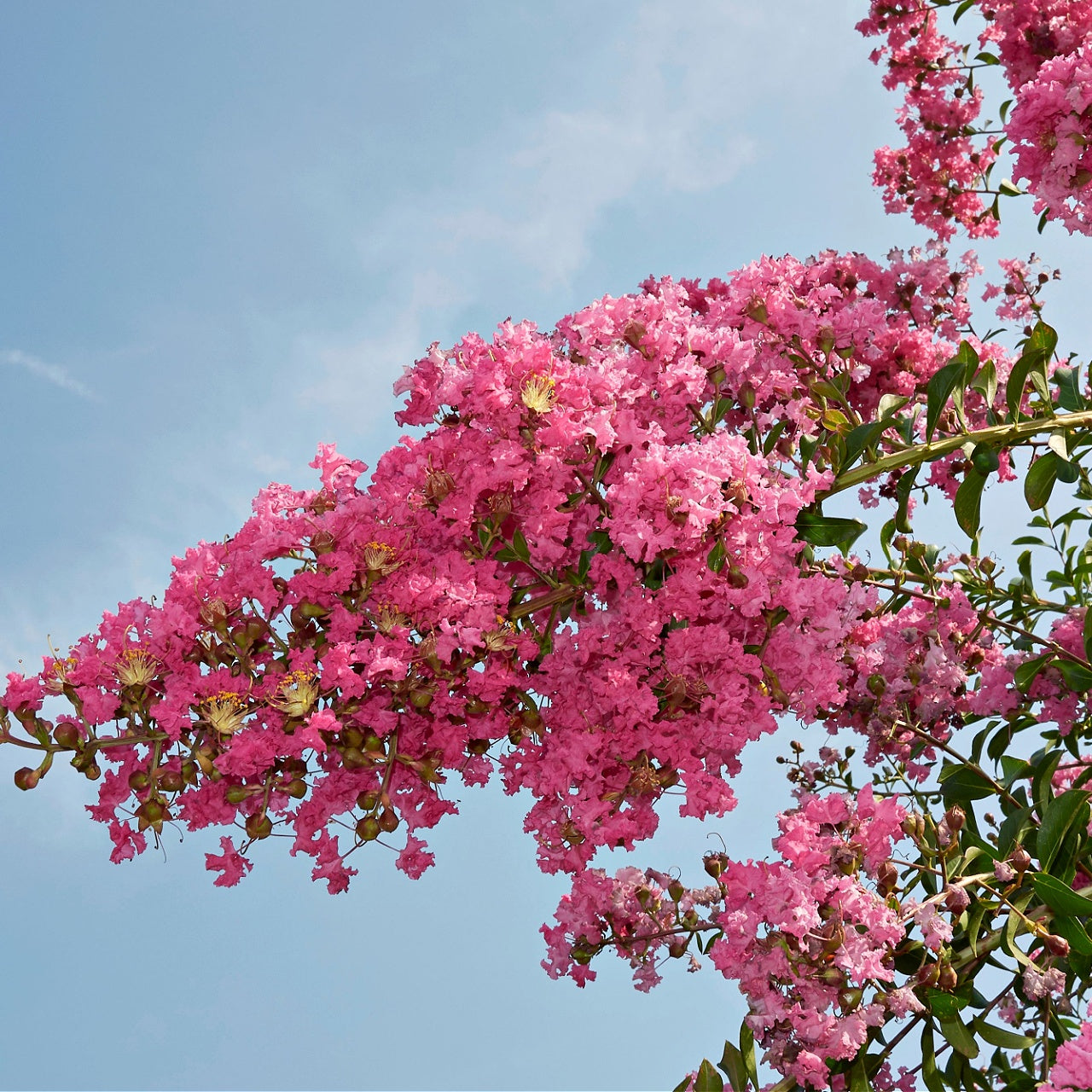Pink Crepe Myrtle Trees
Pink Crepe Myrtle Trees
This plant ships:
Ships November–April within 10 business days after the order is placed.Couldn't load pickup availability
Exposure
Full SunHeight at Maturity
Over 10 FeetUsage
FloweringShipped As
Bare-rootShips
Ships November–April within 10 business days after the order is placed.Planting Zones
7-9Pink Crepe Myrtle Trees
Pink Crepe Myrtle trees are everywhere. They line sidewalks and the edges of pastures, beautify people's yards, and even the parking lots of shopping malls.
They are easy to grow in these warm climates and come in a rainbow of colors. The gardener can choose from rose, white, red, and purple varieties. The tiny, crinkled flowers come in panicles in the summer and last throughout the Fall.
Pink Crepe Myrtle Trees Have Smooth Mottled Bark
Even in the Winter, it is interesting because of its smooth, mottled bark, which sheds all year. The leaves of some cultivars turn maroon or orange-red in the Fall. They are native to southeast Asia and first came from China to the southern United States in the late 18th century.
The Trees can grow southward from hardiness zone 6 and attract butterflies.
They can come in dwarf varieties that grow from only about two feet tall to over 100 feet tall, though most types range from about 15 to 25 feet tall. Its fruit is shaped like a green pod that eventually turns brown, dries out, and splits. The seeds are small and winged.
This Tree Has Stunning Long-Lasting Blooms
Wide varieties of them are named after Indian tribes. One rose type is called 'Choctaw.' This shrub has dark green leaves that turn deep, purplish-red in autumn—the flowers last from mid to late summer. Pretty, the white type is 'Natchez,' which increases and has fiery orange leaves in the Fall. 'Cherokee,' which tends to be more of a shrub than a tree, is one of the red types, while the lovely 'Catawba' is one of the purple types. Its bright green leaves show off the vibrant purple of the blossoms.
They grow best in a hot, sunny spot on the property. They like moist, well-drained soil. A gardener can propagate them through cuttings or seeds. They should be pruned judiciously when they are too dense to promote good airflow through the branches or if branches rub against each other.
Pollinators Love This Flowering Tree
Plants can also be part of a butterfly garden, as they can host some caterpillars.
The wood is sometimes used to make furniture and many other implements. Woodworkers like it because it has a low cutting resistance and is easy to work with, including planning, turning, and molding. It also polishes well, dries comfortably, and can accommodate both hand and power tools.
They can grow in many soils, but the results will simultaneously be more dramatic in well-drained but moist ones. The flowers are the most fantastic feature, varying from roses to reds, whites, and purples. The blooms will become extraordinarily magnificent and give it an elegant appearance. The branches and trunk are also beautiful, light in color, and grow intricately. These will add value to a home and even give it some curb appeal.
Ships As - Bareroot Plant
It is a lovely addition to gardens in zones 6 through 10. It provides fragrant clusters of blooms all summer, and its seeds provide winter interest. Versatile, fast-growing gardeners can train the flowering plants into hedges, making them perfect for ornamental home landscapes, containers, streetside, or community or public gardens. Their mature height is 20 feet with a spread of 6 to 8 feet. It loves the full sun, but this hardy type needs to be more picky about its soil and adapts well to most conditions.
It Can Reach Up To 25 Feet Tall
The Pink Crepe Myrtle trees can be a focal point in many landscapes. This tree, about 25 feet tall and about 17 feet wide, has beautiful white flowers from late spring until summer. Then, when temperatures drop, its leaves turn a brilliant orange. The flowers are incredibly dense on this hardy shrub, which can be used as a privacy screen if desired. It prefers full sun and well-drained soil, but it tolerates mild droughts. They can be multi-trunk or single.
Share






